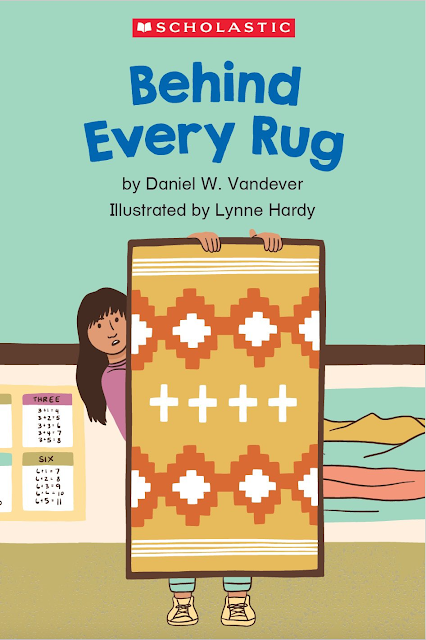HIGHLY RECOMMENDED
This Land: The History of the Land We're On
Written by Ashley Fairbanks (White Earth Anishinaabe)
Illustration by Bridget George (Anishinaabe from Kettle and Stony Point First Nation)
Published in 2024
Publisher: Crown Books for Young Readers
Reviewer: Debbie Reese
Review Status: Highly Recommended
****
Wow! I love how this book starts! The words on the first double-paged spread say "This is my house." Behind it is a river. Beside the house is a tall pine tree. We see a family by the tree.
Turn the page and see "Before us, another family lived here." On that page, the illustrations are family portrait style. Four different families are shown, each family unique, each clad in modern clothes.
Turn the page again and we read the words "Before our house was here, there was another family, with a different kind of house." On that page we see see wigwams in a village and the families who lived in them. The people in that village are wearing clothes with Anishinaabe designs. Behind that village is the river we saw earlier, and that tree? It is a small, young tree.
All the faces and families up to that point are cheery, happy. With the words and illustrations on these pages, Fairbanks and George take us from the present into the past, helping readers see, learn, and feel that the land they're on was someone else's before.
Another page turn and we get hard history. That phrase is used a lot in social justice networks and curriculum, where educators choose to share truths about history that are often omitted. It is a fact that Europeans who came onto Native homelands wanted that land, and the government helped them get it by removing Native peoples from their homelands. We see that on the next page turn. Here's a portion of that page:
(Image from my copy of the book)
It is followed by another page of hard history.
But then, we turn the page again and see the little girl from the very first page, running down the street to her friend's house. That friend, TJ, is Anishinaabe. We see him and his grandma standing in a doorway, smiling and waving at the little girl.
With another page turn we see the little girl, TJ, and his grandmother making bread. The little girl tells us that TJ's grandmother told her about other Native people. At the top of the page, we see nine different people in traditional clothing.
Picture me, smiling! One of them is a Native woman who is dressed the way I dress when I'm home for one of our ceremonies. That 'wow' I felt when I first read the book continues! The little girl is on a road trip. Here's a sentence you'll get to:
At the Grand Canyon, I learned that eight tribes call it home: the Havasupai, Yavapai, Paiute, Hopi, Zuni, Hualapai, Apache, and Diné.
Note: Eight tribes call it home. Present tense verbs! In workshops and professional development, I push very hard to encourage educators to use present tense verbs to talk about us. Again, picture me smiling!
This book is going to be featured in my work, for sure! Another page spread tells us that Disney World is on Seminole land, the White House is on Nacotchtank and Piscataway land, and that Mount Rushmore is on Oceti Sakowin land. There's a link to a database to see what land you (reader) are on, and that page is followed by a page of discussion questions and suggestions to learn more about the people of that land. Illustrations on that page show Native people holding up signs with their tribal nation's name.
Can you feel and understand why I highly recommend this book? Get more than one copy if you can, and if you'd like to support Native-owned bookstores, go there (in person or on line). One option is Birchbark Books. This could be an illustration of me. GET THE BOOK!
(Image from my copy of the book)













